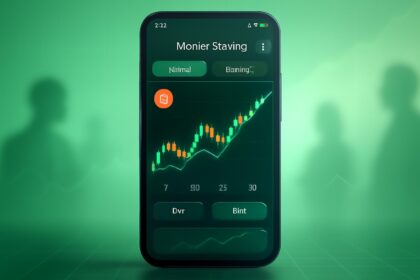Taylor Swift’s latest album,
The Life of a Showgirl, is arriving in multiple collectible vinyl editions that fans like 24-year-old Tayra McDaniels eagerly anticipate. Despite the high cost of collecting these physical formats, buyers benefit from a crucial exemption: vinyl records and other physical music media remain free from import tariffs introduced under recent U.S. trade policy changes. The exemption stems from a Cold War-era provision known as the Berman Amendment to the International Emergency Economic Powers Act, which prohibits presidents from imposing tariffs on “informational materials,” including music, books, and artwork. This carveout shields vinyl records, CDs, and cassettes from tariffs that were otherwise applied after the rollback of the “de minimis” exemption, which previously allowed low-value imports under $800 to enter tariff-free.
“If vinyl had gotten tariffed, you could have possibly seen the price of a record going up to $40 and $50,” said Ralph Jaccodine, professor at Berklee College of Music. “So, this is welcome news for people buying physical music.”
Vinyl’s Resurgence Drives Physical Music Market Growth
The vinyl market has experienced a dramatic resurgence over the past decade, accelerated by the pandemic and fueled by younger consumers’ appetite for nostalgia and collectible music formats. According to the Recording Industry Association of America, vinyl now represents nearly three-quarters of all U.S. physical music revenue, reflecting a nearly 20% increase since 2020. Ryan Mitrovich, general manager of the Vinyl Alliance, emphasized the importance of the tariff exemption in maintaining this momentum. “It is very encouraging and a bit of a relief that physical music formats have been classified as exempt to tariffs,” he said, while cautioning about ongoing trade uncertainties. Taylor Swift’s influence on the market is significant. Her previous album,
The Tortured Poets Department, sold 3.49 million copies physically and digitally, driving a 9.6% revenue increase for Universal Music Group (UMG) in Q2 2024. Physical music revenue surged 14.4% in the same period. Industry projections suggest Swift’s new album could surpass one million vinyl sales in its first week, setting a new record.
“Swift’s release can and will likely cause a boom in the music business,” Jaccodine said, highlighting her unique market-driving power.
Debate Over Tariffs and U.S. Vinyl Manufacturing
Despite the tariff exemption benefiting consumers and the broader market, some U.S.-based record manufacturers argue that tariffs could stimulate domestic production and job growth. Alex Cushing, president of Hand Drawn Records and board member of the Vinyl Record Manufacturers Association, supports tariffs as a means to boost American manufacturing capacity. Most vinyl pressing occurs overseas, with leading manufacturers like GZ Media headquartered in the Czech Republic. GZ Media produces roughly one in four records globally, including some U.S.-based plants. CEO Michal Štěrba noted that tariffs would increase costs passed on to consumers, emphasizing the importance of supply chain efficiency. Cushing acknowledges that while U.S. manufacturers currently lack the scale to meet demand for major releases like Swift’s, tariffs could incentivize growth in smaller-scale production, potentially lowering costs through regional shipping and inventory management. Vinyl industry stakeholders have also prepared for potential tariff impacts by stockpiling raw materials such as PVC and inks prior to tariff implementation.
Physical Sales Provide Higher Artist Revenues Compared to Streaming
Physical music sales remain a critical revenue stream for artists, often yielding higher royalties than streaming platforms. While Spotify pays artists approximately $0.003 to $0.005 per stream, physical sales typically provide artists with 10% to 25% in royalties. Ralph Jaccodine noted, “For artists large and small, merchandise like records, CDs, cassettes, hats, hoodies and ticket sales are the bread and butter.” Taylor Swift’s Eras Tour grossed over $2 billion, while her streaming earnings ranged between $200 million and $400 million during the same period.
Gen Z Drives Vinyl’s Continued Popularity
Gen Z consumers have been pivotal in vinyl’s revival, with nearly 60% of 18- to 24-year-olds reporting regular listening to physical music formats, according to a 2024 UK survey by Key Production. This demographic’s enthusiasm is reflected in the proliferation of collectible vinyl variants featuring unique cover art, colored discs, and exclusive tracks. The collectible nature of vinyl has been amplified on social media platforms like TikTok, where “vinyl haul” videos attract millions of views and fuel demand. Fans like McDaniels describe the pursuit of variants as a compelling hobby driven by a fear of missing out.
“Vinyl is counter to all the ease of modern music listening and that’s why people want it,” said Alex Cushing, highlighting the desire for tangible ownership amid digital saturation.
Taylor Swift’s strategic release of numerous album variants—36 for her last album alone—exemplifies how artists and labels capitalize on this trend, generating substantial incremental revenue. “Sales of Swift’s albums act as drivers for the fortunes of almost the entire music industry,” Jaccodine said. The industry eagerly anticipates the impact of her new release. For superfans like McDaniels, the challenge is securing exclusive editions early, with prices under $75 considered worthwhile for collectors.
FinOracleAI — Market View
The exemption of vinyl records from tariffs sustains a significant growth segment within the music industry, preserving consumer affordability and supporting artist revenue streams. Taylor Swift’s new album release is poised to reinforce vinyl’s market dominance, driven by Gen Z collectors and the appeal of physical ownership.
- Opportunities: Continued vinyl sales growth, increased artist royalties, expansion of collectible editions, potential boost in domestic manufacturing if tariffs are revisited.
- Risks: Supply chain disruptions, trade policy changes, capacity constraints in U.S. manufacturing, volatility in consumer demand post-pandemic.
Impact: The tariff exemption positively affects the physical music market, supporting sustained revenue growth for artists and labels while enhancing consumer access to vinyl products amid evolving trade dynamics.













